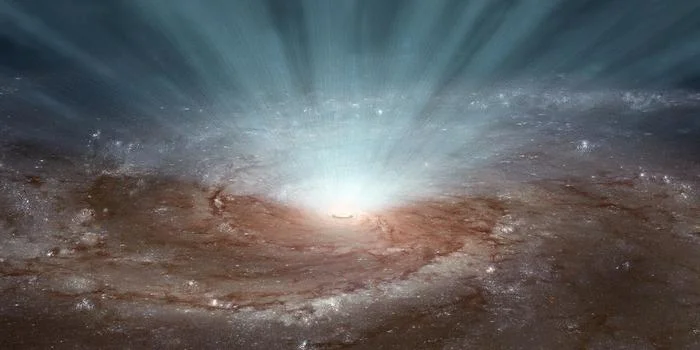
Black Holes May Be the Cosmic Ray Accelerators We’ve Been Searching For
For decades, the origin of ultra-high-energy cosmic rays has been one of the most persistent mysteries in astrophysics. These minuscule particles, primarily atomic nuclei, hurtle through the universe at mind-boggling speeds, carrying energies far exceeding anything we can create on Earth. New research from the Norwegian University of Science and Technology (NTNU) suggests a compelling explanation: supermassive black holes and their powerful winds.
Though often called “rays,” this cosmic radiation comprises highly accelerated small particles blasted forth from undetermined regions of the universe. Scientists have long suspected a connection to the most extreme environments, such as neutron stars, black holes, or supernovae.
"We suspect that this high-energy radiation is created by winds from supermassive black holes," said co-author Foteini Oikonomou, an associate professor at the NTNU Department of Physics. Her team's findings suggest that these winds, which can reach half the speed of light, may be the cosmic accelerators responsible for these ultra-high-energy particles.
The Milky Way galaxy, like many others, hosts a supermassive black hole at its center, Sagittarius A*. While Sagittarius A* is currently relatively quiet, many other black holes across the universe are active, devouring matter equivalent to several Suns each year. According to co-author Enrico Peretti from the Université Paris Cité, a fraction of this consumed material is pushed away by the black hole's force, creating powerful winds that sweep through the universe.
These winds, scientists discovered about a decade ago, can significantly impact entire galaxies, even halting star formation. The new research, however, focuses on their potential to accelerate particles to extreme energies. Lead author Domenik Ehlert suggests that these powerful winds could be the source of the ultra-high-energy radiation.
"It is possible that these powerful winds accelerate the particles that create the ultra-high-energy radiation," said Ehlert.
The energy contained within these particles is astonishing. As Oikonomou explains, an ultra-high-energy cosmic ray, smaller than an atom, possesses the same amount of energy as a tennis ball served by Serena Williams at 200 kilometers per hour – roughly a billion times more energy than particles produced in the Large Hadron Collider.
While harmless to life on Earth due to atmospheric absorption, cosmic radiation poses a "very serious problem" for astronauts, according to Oikonomou. Although the primary concern for astronauts is radiation from our Sun, understanding the origins of these ultra-high-energy rays remains crucial.
Previous theories have suggested other sources for cosmic rays, including starburst galaxies, gamma-ray bursts, and plasma outflows from black holes. However, as Ehlert notes, no one had definitively linked any of these sources to the observed cosmic rays. That's why the NTNU team decided to investigate the winds from supermassive black holes.
Despite the promising results, Oikonomou emphasizes a cautious approach. She acknowledges that while the conditions related to these winds align particularly well with particle acceleration, conclusive proof is still needed. One unresolved aspect is the chemical composition of the cosmic rays in a specific energy range, which the current model cannot fully explain. Future collaborations with neutrino astronomers could provide the necessary evidence to confirm or refute the black hole wind hypothesis.
Could supermassive black hole winds finally solve the mystery of ultra-high-energy cosmic rays? While more research is needed, this new model offers a compelling and potentially groundbreaking explanation. What do you think? Leave your comments and thoughts below!